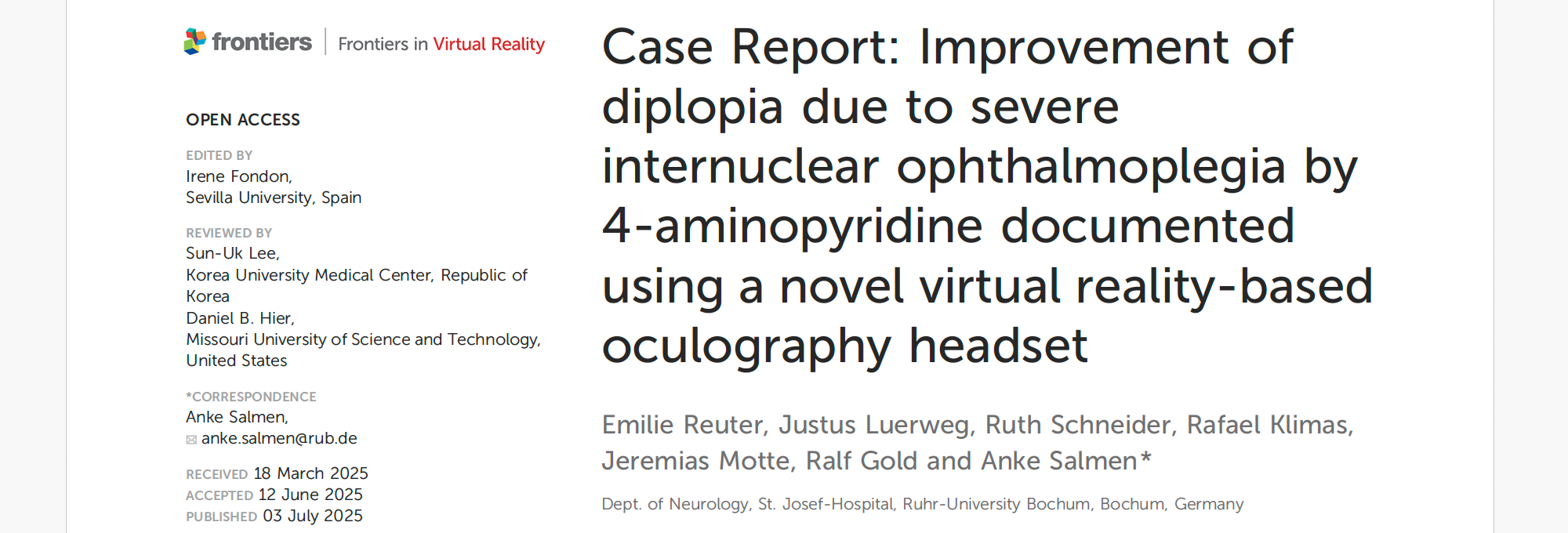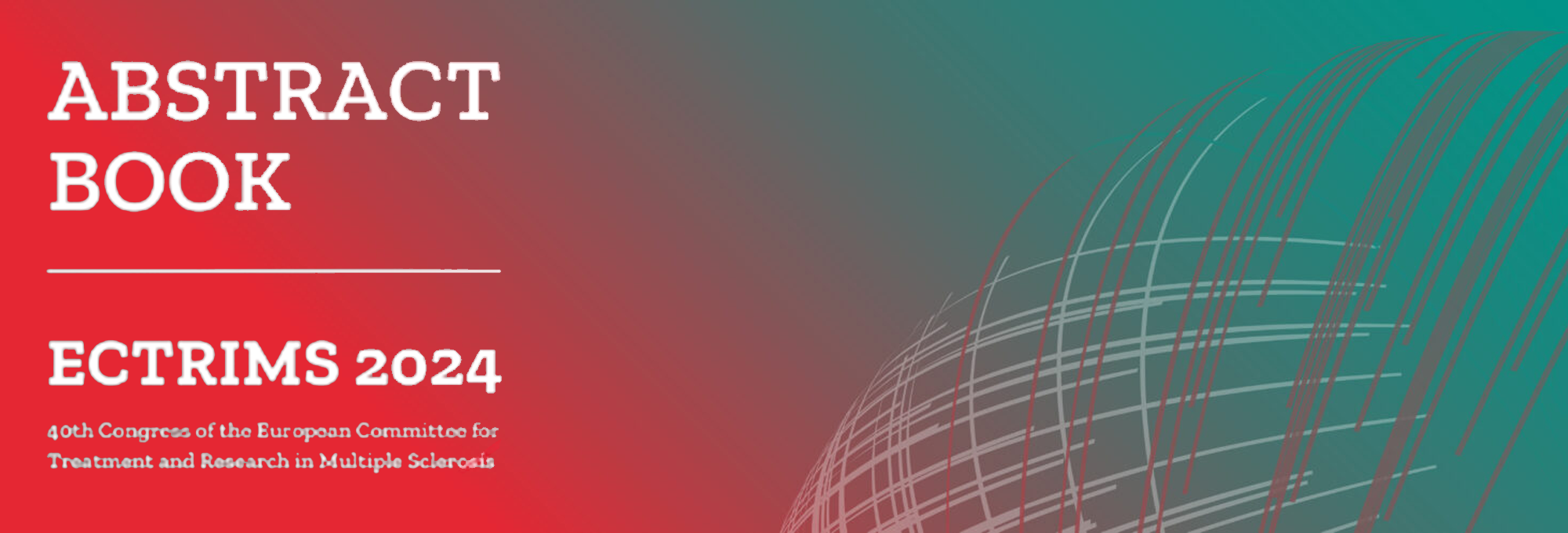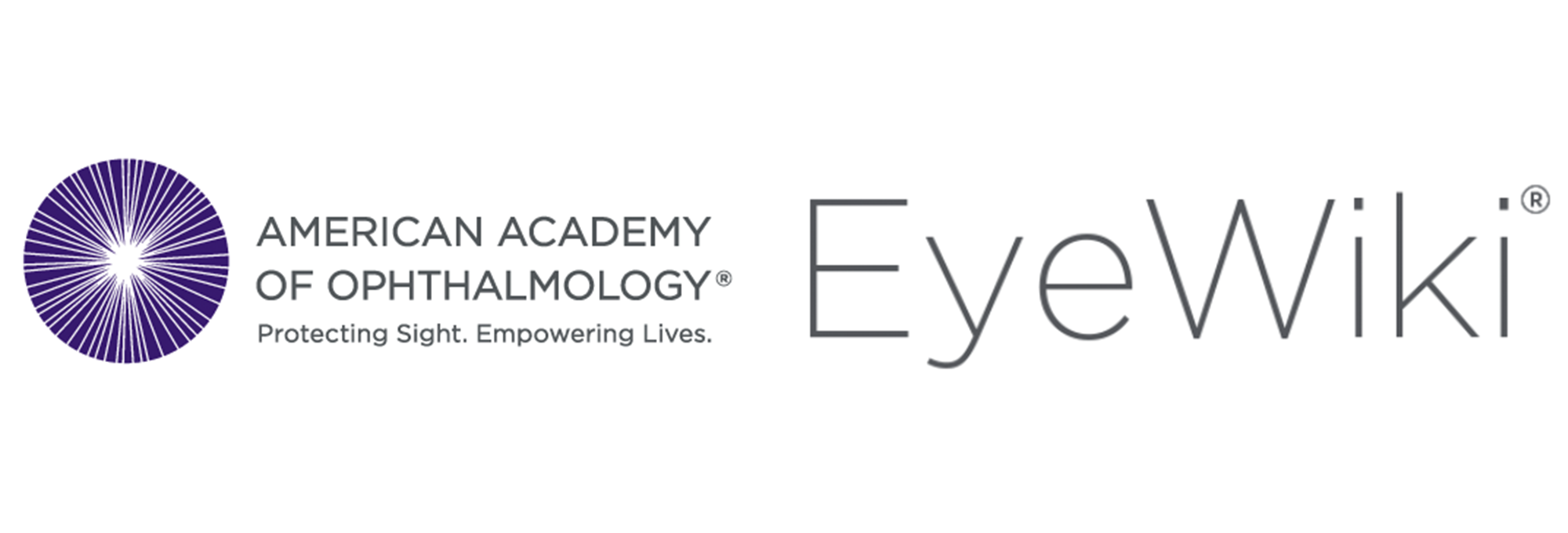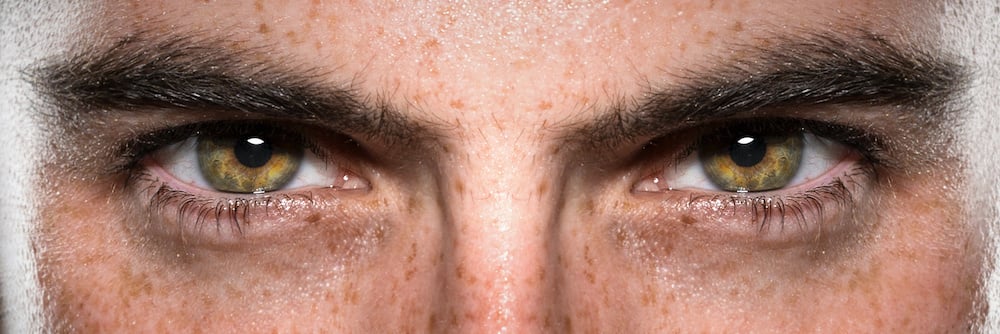MS Case Report
VR-based oculography provides quantitative measurements of Internuclear Ophthalmoplegia (INO)
Multiple Sclerosis (MS) is one of the most common diseases of the central nervous system. Worldwide, about 2.8 million people are currently affected by MS (as of 202021). MS often begins between the ages of 20 and 40 and affects more women than men21. The measurement of eye and pupil movement has an important prognostic potential.
Multiple Sclerosis (MS) is a neurological inflammatory disorder where the heavily myelinated regions of the nervous system including the optic nerves, cerebellum, brainstem and spinal cord, are affected.The assessment of visual pathways is critical, considering that MS can affect multiple components of the visual pathway, including optic nerves, uvea, retina and occipital cortex.
Optic neuritis is one of the most common forms of presentation in multiple sclerosis: in 25% of new MS cases optic neuritis is the initial clinical event. Moreover, studies show that 50-70% of all patients with MS will experience optic neuritis at some stage of the condition. Optic neuritis presents with acute unilateral vision loss1 - 3. Visual field defects are present in almost all patients with optic neuritis (97.5%)1. Relative afferent pupillary defects (RAPD) occur in 96% of acute unilateral optic neuritis cases4.
Eye movement impairments are common in all MS phenotypes, even at the earliest stages15. They have the potential of being used as structural and functional biomarkers of early cognitive deficit, and possibly help in assessing disease status and progression, as well as to serve as a functional outcome to test novel therapeutic agents for MS13.
Two studies from the same research group in 50 MS patients found that those with abnormal eye movements were more disabled than those with normal eye movements, even though the age and duration of disease were similar in both groups16, 17. A two-year follow up study showed that patients who had abnormal eye movements remained significantly more disabled (median EDSS of 7.0) than those with normal eye movements (median EDSS of 5.0)18. MRI scans showed abnormal signals in the brain stem or cerebellum of 60% of patients with abnormal eye movements and only 28% of patients with normal eye movements. The eye-movement disorders most commonly noted in these studies were saccadic dysmetria, INO, and nystagmus18. Another study on 37 patients reported that the presence of compensatory saccades were associated with a greater MS-related disability, as measured by EDSS scores19.
The most frequently observed eye movement disorders in MS are saccadic dysmetria (91%), INO (68%), vestibulo-ocular reflex abnormalities and gaze-evoked nystagmus (36%), fixation instability, and impaired smooth pursuit 1,5 - 10. These oculomotor dysfunctions in MS have been attributed to lesions of either the brainstem or the eye fields.
Internuclear ophthalmoplegia (INO) could potentially be a biomarker of axonal and myelin integrity in MS13. A study in 76 patients with MS showed that video-oculography can be useful to detect demyelinating process at preclinical stage by highlighting subclinical eye movement impairments even in absence of characteristic lesions visible on MRI15.
INO is characterized by ipsilateral adduction palsy and horizontal jerk nystagmus of the contralateral eye during abduction8. It is due to a lesion within the medial longitudinal fasciculus12. In patients with MS, INO is frequently bilateral. Slowing of adducting saccades may sometimes be the only manifestation of INO8. Recording of eye movements can increase detection of slowed adduction in INO.
Because of its close connection with ocular nerve impairment, saccadic tests are popular and frequently used to assess oculomotor function in MS7, 9. Saccadic initiation time (saccadic latency) is longer in MS patients than in healthy subjects. Saccadic peak velocity and amplitude are also decreased in MS11.
A study in 111 patients with MS and 100 healthy controls showed that microsaccades could be an objective measurement of MS disability level and disease worsening: a greater number of microsaccades showed significant association with higher Expanded Disability Status Scale score (EDSS), nine-hole peg test, Symbol Digit Modalities Test (SMDT), and Functional Systems Scores (FSS) including brainstem, cerebellar, and pyramidal14.
Smooth pursuit may also be an early disease marker. A study in 20 patients with clinically isolated syndrome (CIS) and in 40 patients with early MS patients showed that smooth pursuit integrity is already substantially affected in both conditions. The authors concluded that low pursuit gain and increased saccadic amplitudes may be markers of disseminated pathology in CIS and in MS20.
In addition, there is a diagnostic and prognostic potential of eye tracking to assess cognitive function and disease severity in MS2,3.

VR-based oculography provides quantitative measurements of Internuclear Ophthalmoplegia (INO)

Automated oculography using a VR-headset in moderately to severely disabled MS patients

The EyeWiki is written by physicians and surgeons. Read their literature review regarding Multiple Sclerosis.

More than 50% of children with a tumor in the brain stem show neuro-ophthalmological signs and symptoms